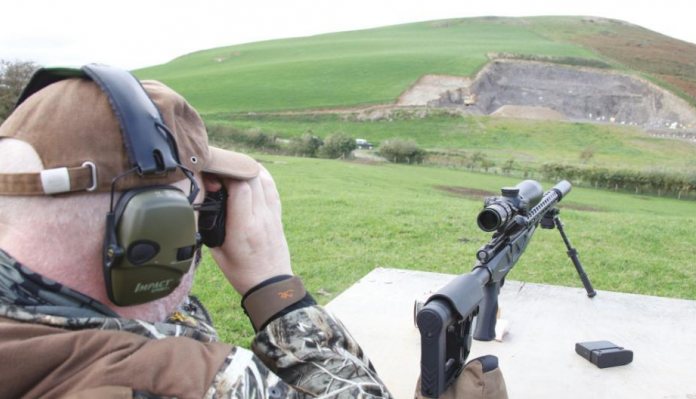Sig Sauer Electro-Optics Box
- By Pete Moore
-
389
 Comments
Comments
- Last updated: 21/12/2018

Recently I got the chance to go hands on with the latest innovation from SIG SAUER Electro- Optics division, the BDX (Ballistic Data Exchange). In a world of smart scopes and rangefinders, it stands out. It consists of a laser rangefinder (LRF) that links to a dedicated optic to give accurate and fast, down-range shooting solutions out to 800 yards, in a most practical of packages.
It was at WMS Firearms and hosted by the SIG SAUER importers, Highland Outdoors, MD John Bright was there to welcome us along with his crew and SIG SAUER personnel to explain the system. It consists of two elements, one of their four, KILO BDX LRFs (laser binos to follow) and Sierra3BDX scope in a choice of five specifications. These connect by Bluetooth and use your smart phone for programming. I’ll keep it brief, as I have a BDX system on a heavy barrelled, 243 Win Howa 1500 on test, but here are the basics.
You download the phone app that allows you to input data and parameters that are sent to the KILO. These would typically include ballistic, wind and weather data, zero range, plus you can further configure it for MOA or Milliradian, access the bullet data files that give weights, ballistic coefficients etc in G1 or G7. It’s possible to store 25, separate ballistic/rifle parameters. It also allows you to pair and bond the two items, so that they are connected and then use the LRF to speak to the scope and provide firing solutions.
The scopes are pleasingly conventional looking in size, weight and features, as all the magic goes on inside. The reticle is a medium-width Dual-X type with injected red dots that give the various range and windage aiming marks. There’s a cant indicator (Sig LevelPlex), which allows you to level for the shot. Wind can be taken from a Kestrel Anemometer linked by Bluetooth, or input as to what you have at the time. For most, that means 10 mph at 3 O’clock and, if it changes, you can re-enter or compensate, depending. Then Windage sorted, you just ping the target and watch the red aiming point appear and just hold as indicated; equally so, with the windage.
We only got out to 300 and 450 yards, but in truth that’s enough for significant changes in trajectory. SIG SAUER says the BDX is good out to 800 yards, which would not surprise me! Results proved the system works very well; John Bright described it as: “a game changer”. I tend to agree, as the 223 Rem firing 55-grain ammo was consistently hitting an 8” gong at 450 yards in a 10 MPH wind, the 243 and 308 Win rifles proved better, but that’s still pretty good for a 22 centrefire!
Price-wise, you could buy the ‘entry package’ of a Sierra3BDX 3.5-10x42 scope and a KILO 1400BDX LRF for around £1000, which compared to other automatic ranging scopes is very keen indeed. Simple to set up and use, BDX is possibly how we will shoot in the future; watch this space!
My thanks to John Bright and Andrew and Helena Venables (WMS) as it was a great and eye-opening day.
